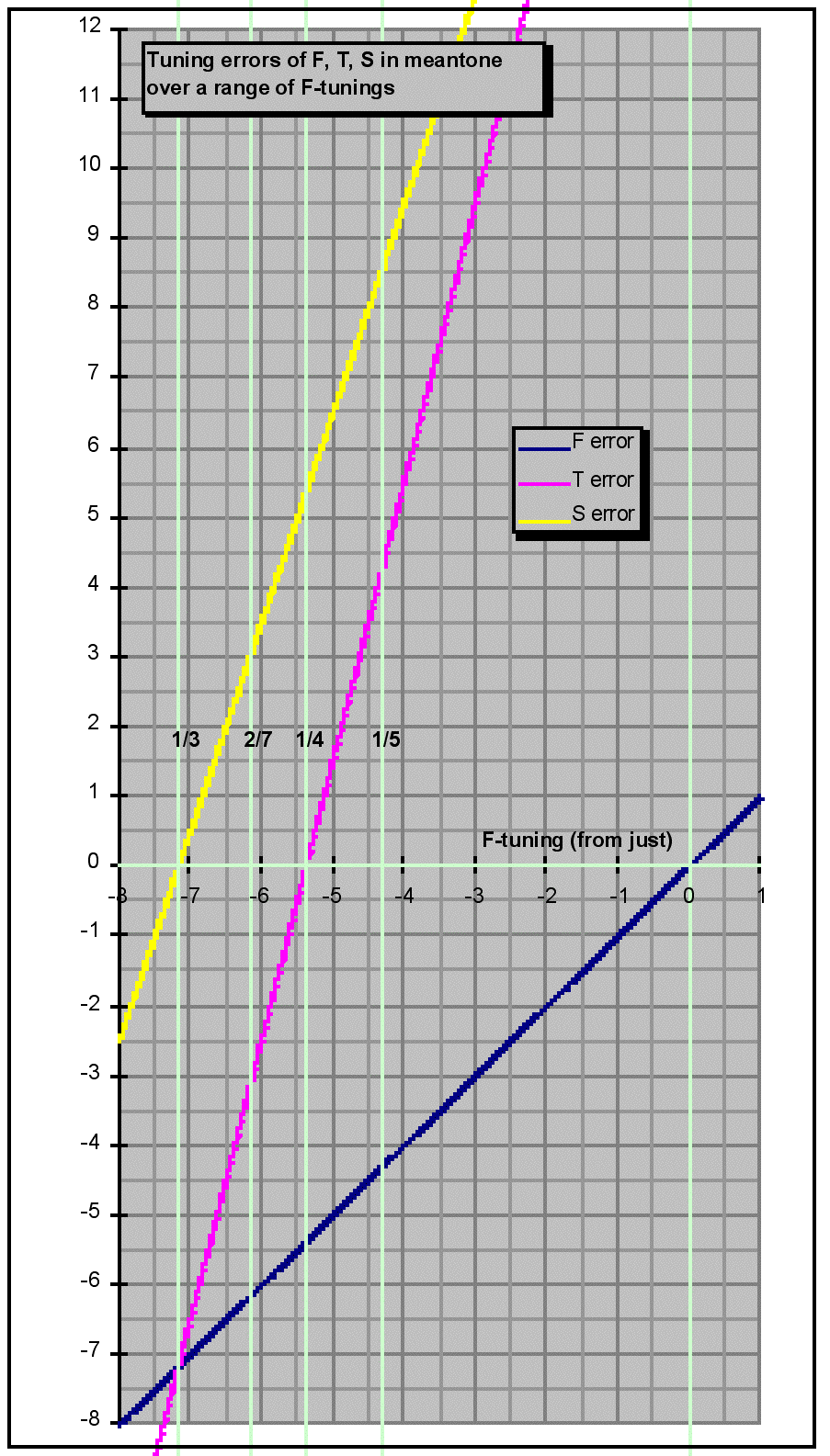

Purer-Tuning RangesThe tuning sliders are used to change the sizes of the generators of the tuning system. This has a consistent effect on the size of all intervals and triads in the tuning continuum. The Purer-Tuning range is bounded by the sharpest and flattest tunings at which the primary consonances remain justly tuned. A rank-2 regular temperament (such as those defined by a generator and a pseudo-octave) can only have one of the primary consonances tuned justly at a time. For instance, in the Syntonic continuum:
The tunings in the above example extend from 1/3-comma meantone (694.79 cents) to Pythagorean (701.96 cents). This range is called the Purer-Tuning range of the Syntonic temperament, and each of these tunings can be explored by setting the tuning slider to the relevant positions indicated to the left of the Syntonic slider (setting the tone diamond to its left-most position ensures that the sounds remain harmonic). Note that manyh of the major and minor triads of 12-TET appear out-of-tune compared to the 1/4-comma triads. In the Syntonic continuum, the tuning of the major thirds changes more rapidly than the tuning of the perfect fifths as the tuning slider is moved. This occurs because a major third is made up by stacking four perfect fifths: hence when the tuning of the fifth changes by x cents, the tuning of the third changes by 4x cents. A rank-2 regular temperament (such as those defined by a generator and a pseudo-octave) can only have one of these primary consonances purely tuned at a time. For instance, in the syntonic continuum, for instance:

This figure illustrates how 1/3-comma and 0-comma mark meaningful tuning boundaries. From The Pythagorean to the 1/4-comma, the tuning of the third and sixth improve. From 1/4-comma to 1/3-comma, the tuning of the sixth improves. Below 1/3-comma, the fifth, third and sixth get worse. Above the Pythagorean, all three worsen. It is only within this range, called the purer-tuning range, that there are meaningful tradeoffs in the tuning of the primary consonances. |
©2008 William Sethares; site design by Anthony Prechtl |